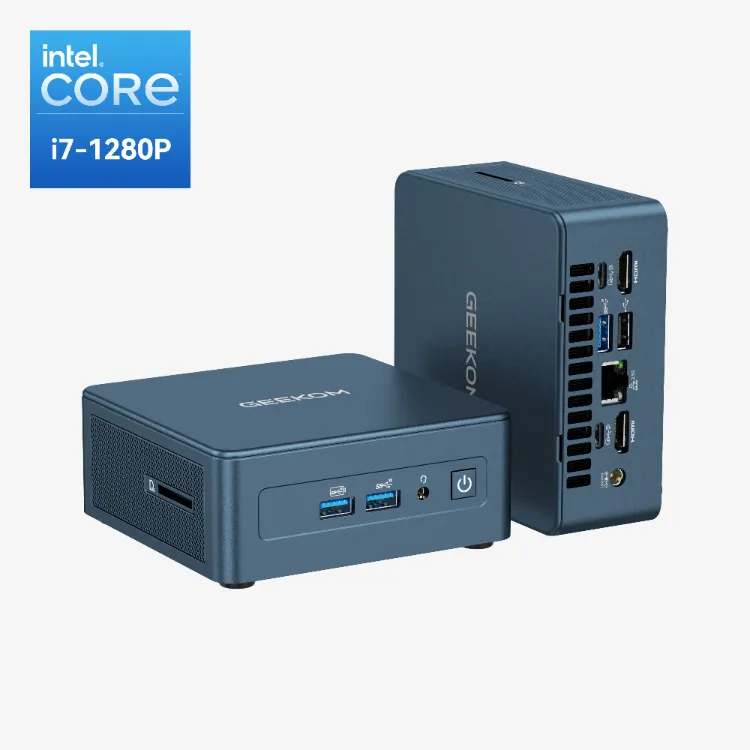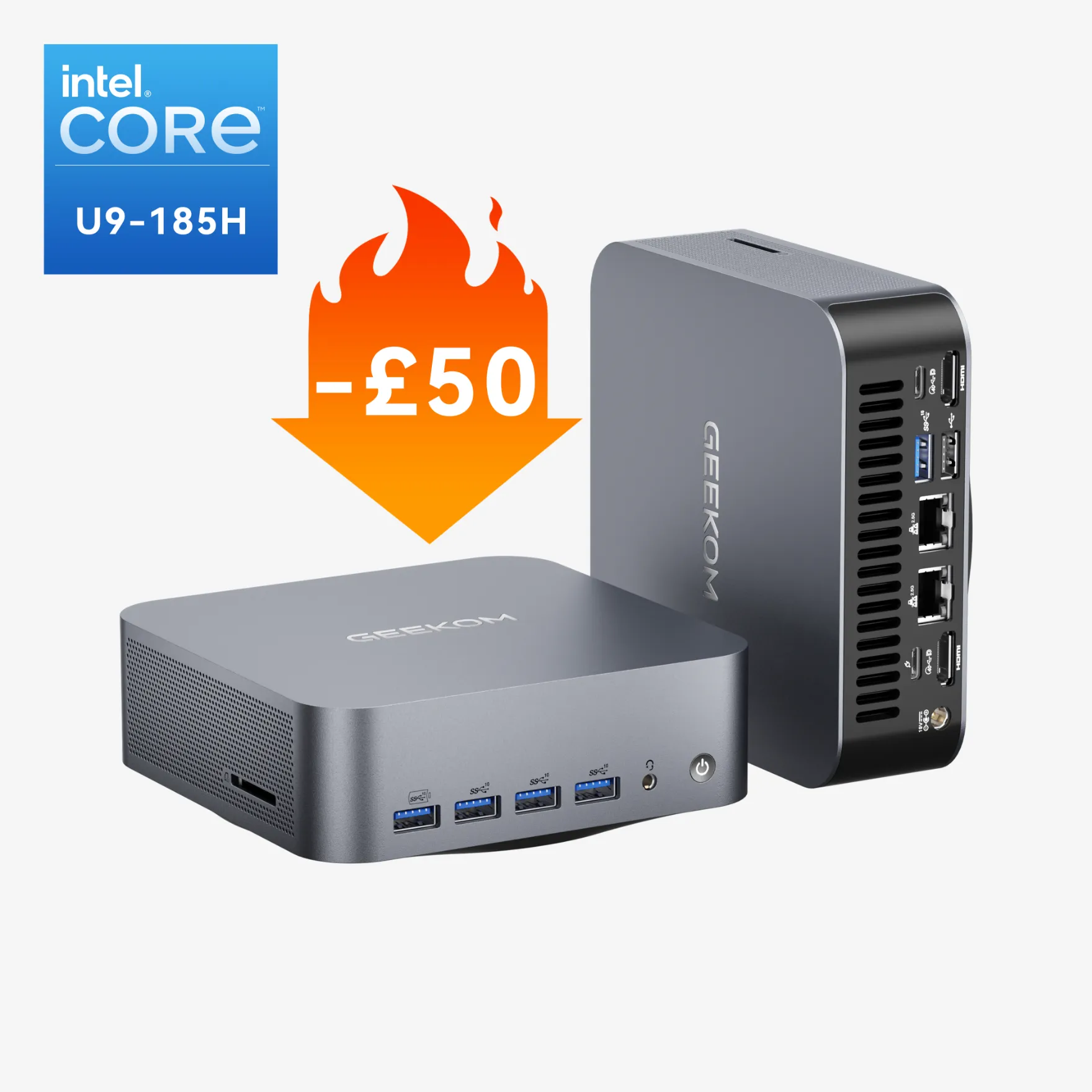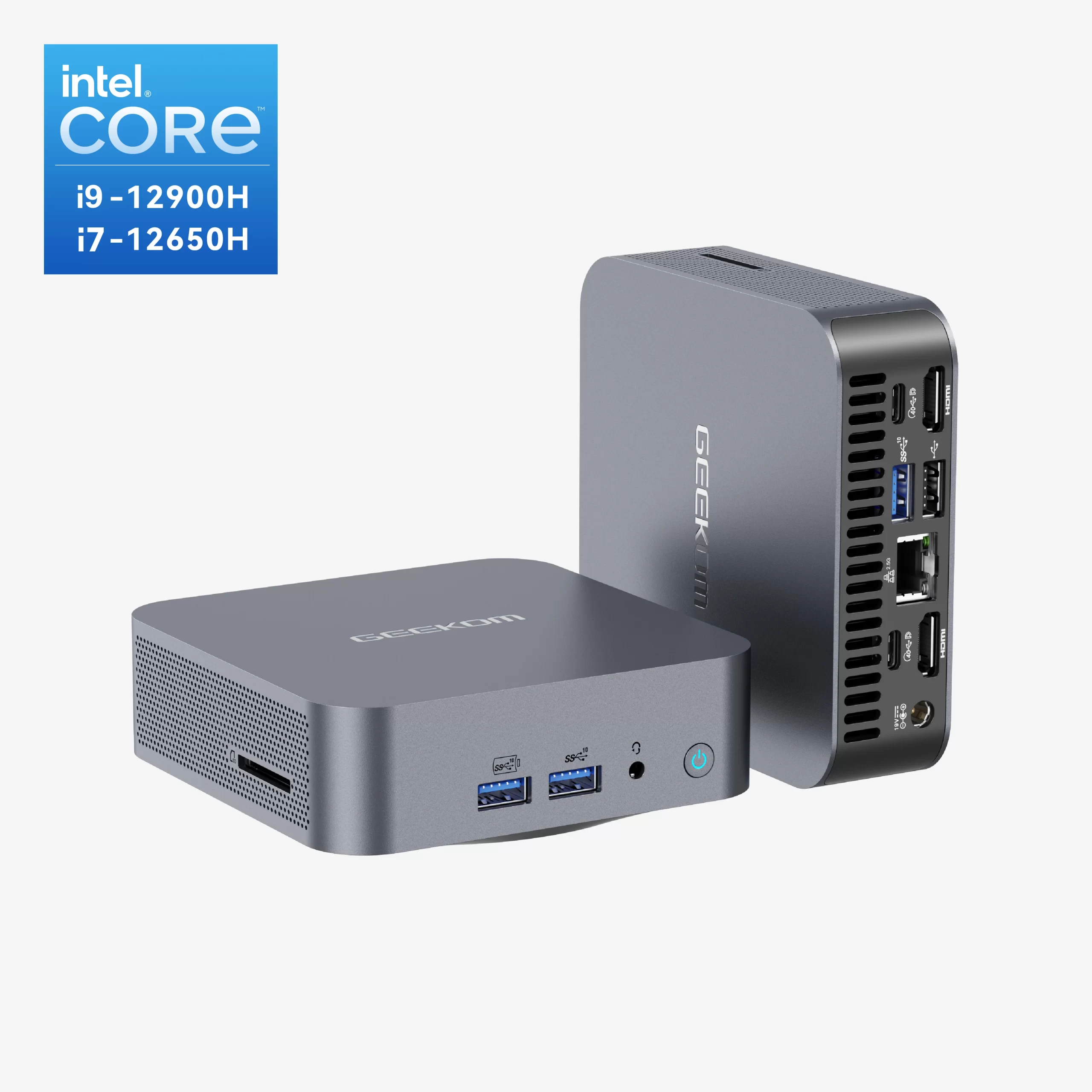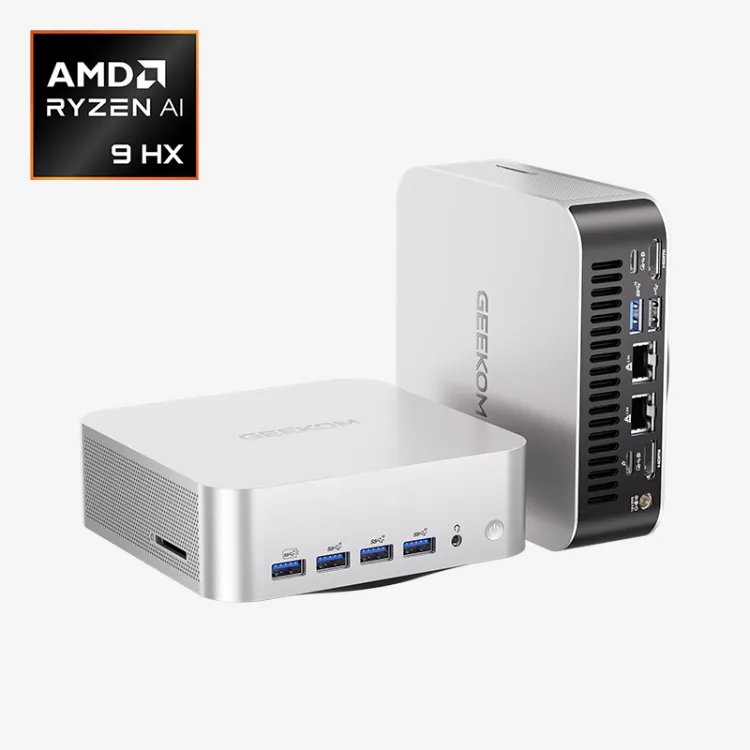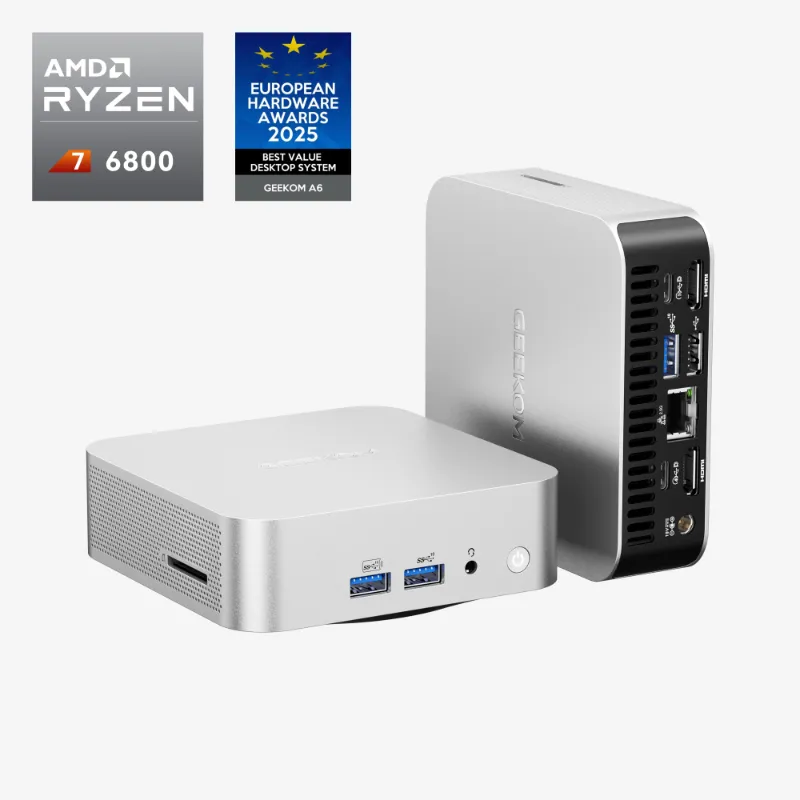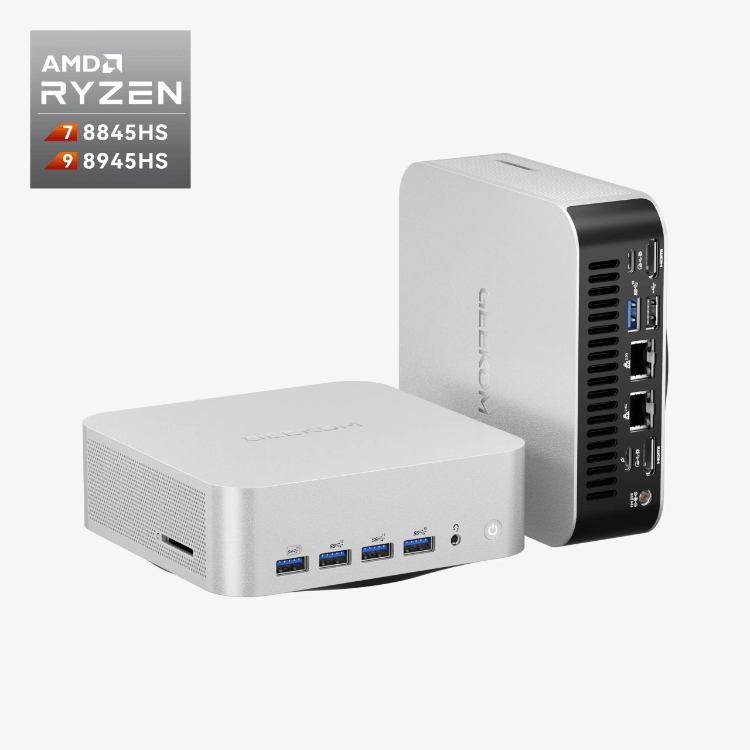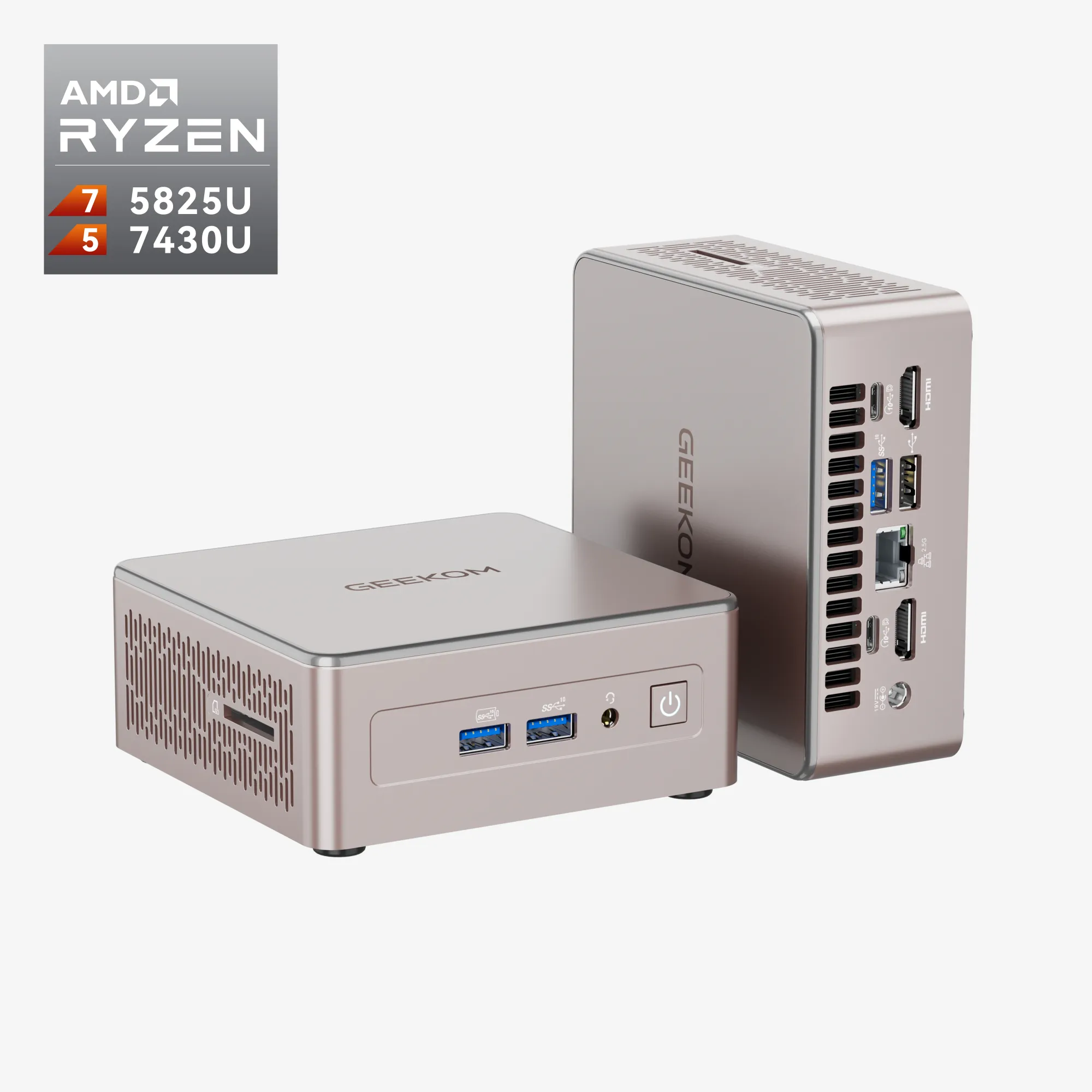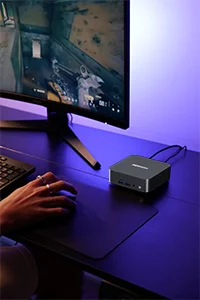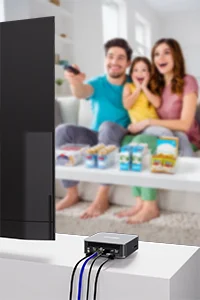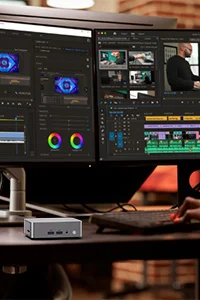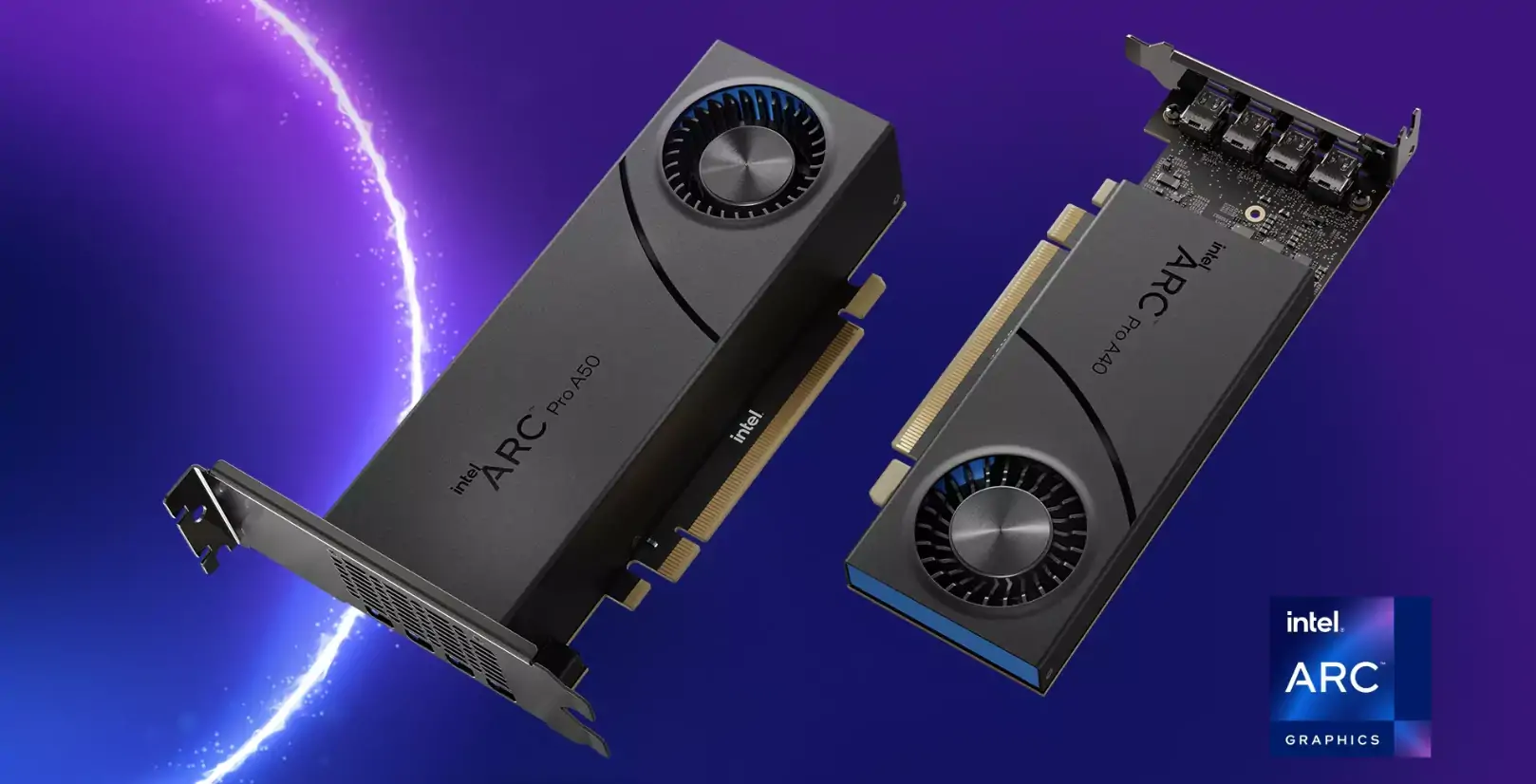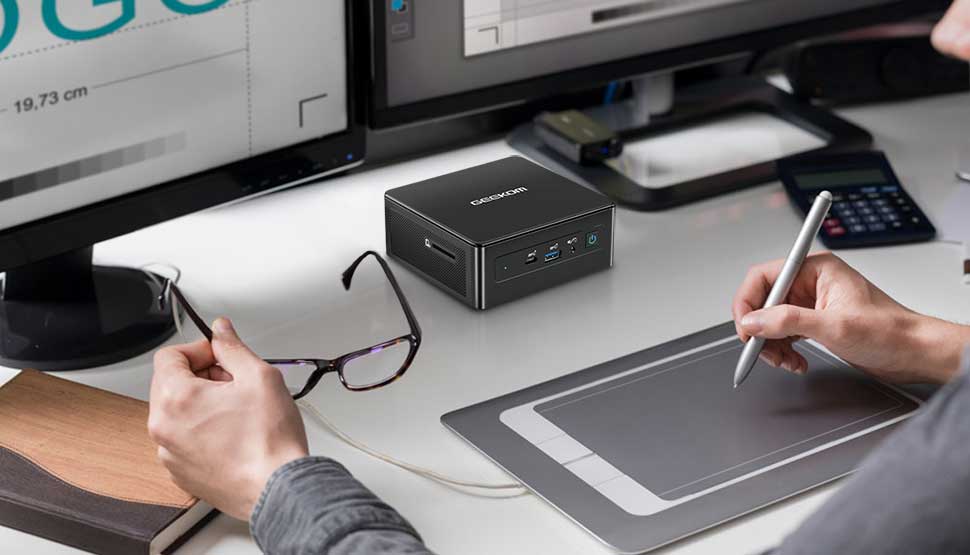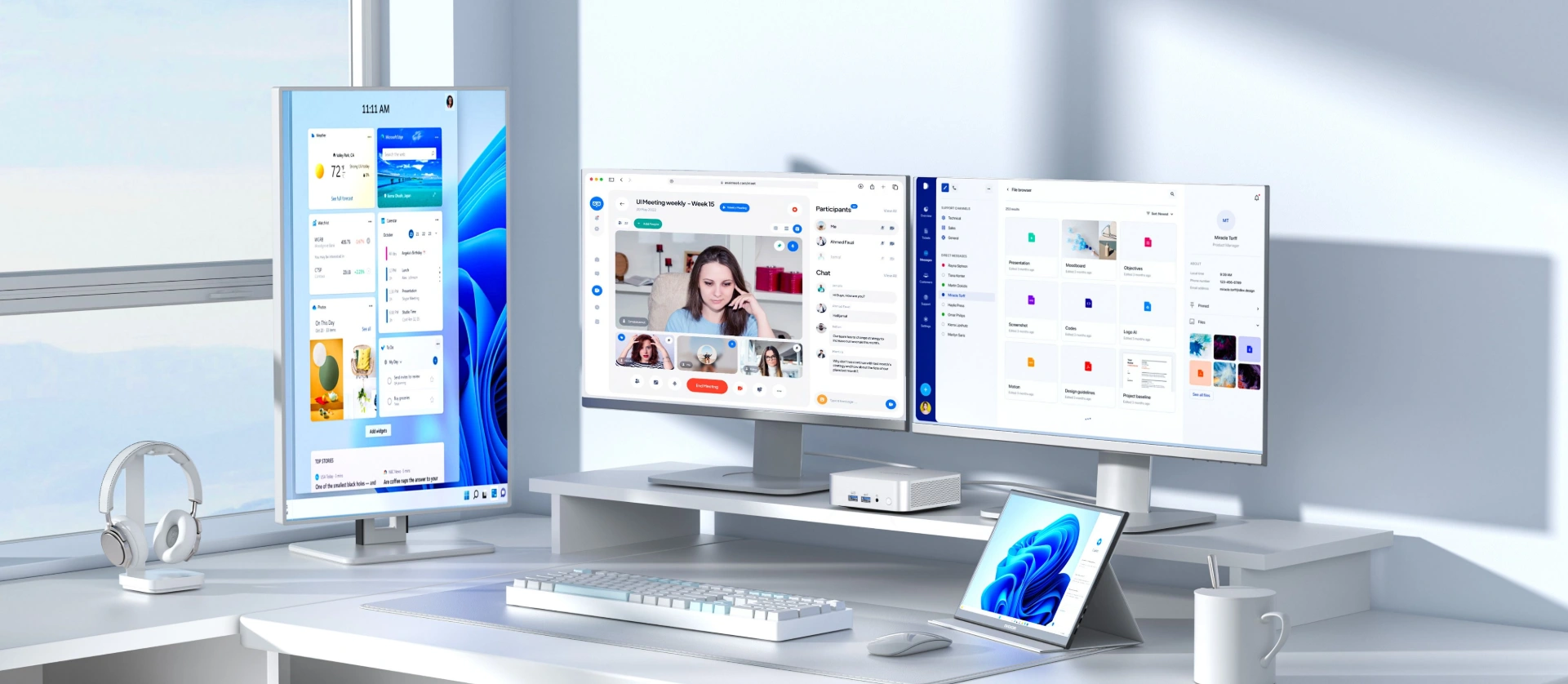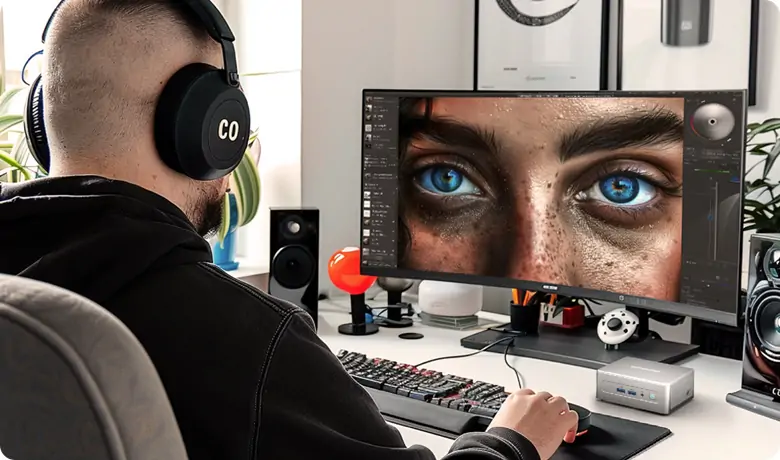Long reserved for high-end graphics cards, Ray Tracing is gradually becoming accessible, particularly thanks to more affordable models. With the Intel Arc 140T, Intel intends to offer an economical alternative to gamers who wish to discover this technology without blowing their budget.
In this article, discover a complete test of this graphics card in real scenarios to evaluate its Ray Tracing and classic gaming performance. Is it truly the ideal solution for enjoying advanced graphics without breaking the bank? Discover our detailed analysis to find out if the Arc 140T keeps its promises.
Intel Arc 140T: Specifications and Market Positioning
With the Arc 140T, Intel targets the affordable graphics card sector, particularly by banking on modern technical specifications and competitive value for money. Before analysing its in-game performance, let’s look in detail at its specifications and market positioning.
Key Specifications
The Intel Arc 140T integrated graphics processor (iGPU) is equipped with technical specifications designed to make Ray Tracing accessible to more modest budgets. It features 6 GB of GDDR6 VRAM memory, which is sufficient for playing in Full HD with high graphics settings on most recent games. Its architecture is based on Xe cores, Intel‘s proprietary technology that handles both classic graphics processing and Ray Tracing.
This iGPU supports hardware Ray Tracing, allowing light effects without relying solely on the processor (CPU). Another interesting point is its compatibility with the AV1 codec, an advantage for streamers and content creators, as this format offers better video compression without sacrificing quality.
Finally, the Arc 140T offers XeSS (Xe Super Sampling) technology, which is equivalent to NVIDIA’s DLSS. This upscaling system improves performance whilst maintaining good image quality. It’s particularly ideal for more modest configurations.
In summary, the Arc 140T model aims for the essentials whilst integrating some highly appreciable modern options.
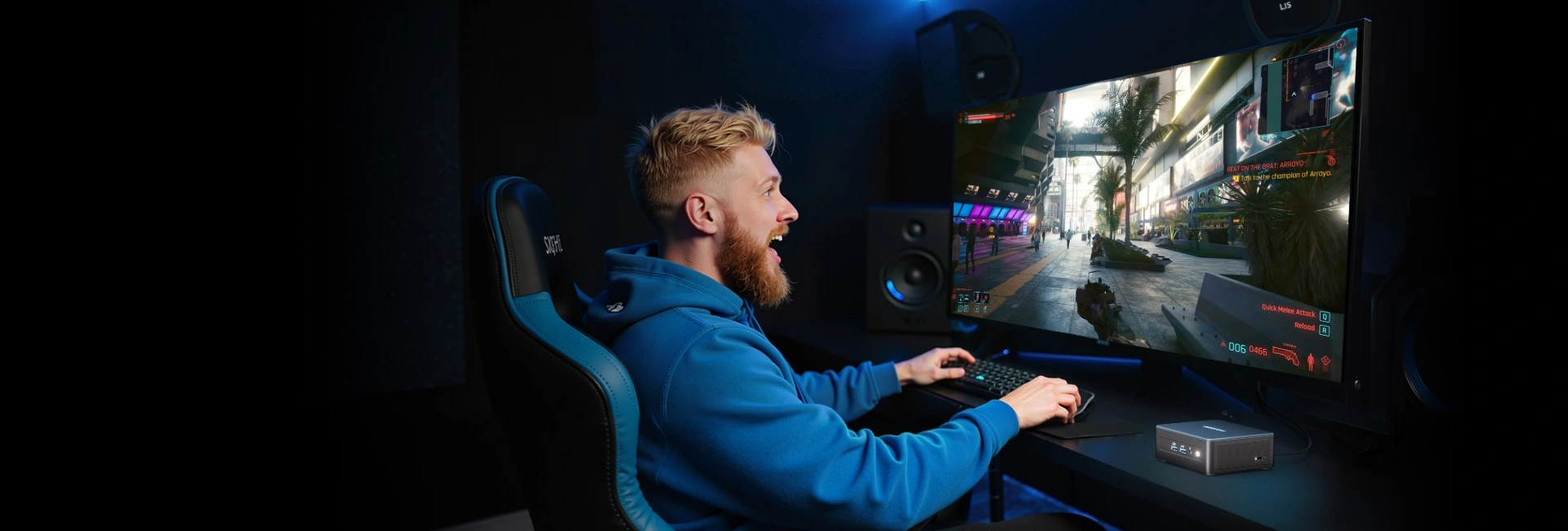
Market Positioning Versus Competitors
In the affordable graphics solutions market, the Arc 140T positions itself against two well-established references: the NVIDIA RTX 3050 and the AMD Radeon RX 6600. Regarding price, the Arc 140T aims to be slightly more accessible than its direct competitors. This solution clearly targets gamers seeking an economical solution for playing in Full HD with Ray Tracing enabled.
Compared to the RTX 3050, the Arc 140T offers similar Ray Tracing performance, particularly thanks to its Xe cores and hardware Ray Tracing management. However, NVIDIA’s software support remains more mature. Against the AMD RX 6600, Intel’s integrated solution focuses on better value for money, particularly for gamers interested in Ray Tracing, where the RX 6600 remains more limited.
Finally, the integration of XeSS technology gives the Arc 140T an interesting advantage, allowing it to improve performance in demanding situations whilst remaining less expensive. In summary, Intel offers here a credible alternative for democratising Ray Tracing amongst budget-conscious gamers.
For clarity, here’s a comparative table of these three options:
| Feature | Intel Arc 140T | NVIDIA RTX 3050 | AMD RX 6600 |
|---|---|---|---|
| Type | iGPU (Arrow Lake-H/HX) | Dedicated GPU (laptop) | iGPU (Ryzen 7040/8040) |
| VRAM | No (shared memory) | 4 to 6 GB GDDR6 | No (shared memory) |
| Ray Tracing | Yes (8 RT Units) | Yes | Yes (limited) |
| Upscaling | XeSS | DLSS 2.x | FSR 2/3 |
| AV1 Codec | Yes | Yes | Yes |
| Price | Integrated in CPUs, laptops between £765 and £1,360 | Around £215–£300 (GPU only) / £850–£1,275 (laptop) | Around £255–£340 (GPU only) / £765–£1,190 (laptop) |
Read more about: Best Graphics Cards 2025: Ultimate GPU Buyer’s Guide
Intel Arc 140T vs RTX 4060: How Does It Compare?
The Intel Arc 140T positions itself as an economical solution for enjoying Ray Tracing, but how does it stand up to an established card like the NVIDIA RTX 4060? In terms of raw performance, the RTX 4060 remains well ahead, with better real-time Ray Tracing management, more mature DLSS 3.5, and more optimised power consumption. However, the Arc 140T offers very aggressive value for money for 1080p gamers, especially in XeSS-compatible games. If your budget is tight and you play less demanding or Intel-optimised titles, the 140T can be a serious alternative provided you accept some compromises.
Test Methodology
To evaluate the real performance of the Intel Arc 140T, we designed a rigorous test methodology, particularly by reproducing concrete usage scenarios. From hardware configuration to selected games, each parameter was chosen to reflect typical PC gamer usage on laptops.
Test Bench Configuration
For our tests, we used a laptop equipped with an Intel Core Ultra 9 285H processor, integrating the Arc 140T GPU. The configuration included 32 GB of DDR5 RAM (to avoid any memory limitation) and a fast NVMe SSD (for optimal loading times). All tests were performed under Windows 11, with the latest Intel Arc graphics drivers available at the time of writing. This allowed us to ensure maximum compatibility and optimised performance.
Test resolutions were primarily set to Full HD (1080p), a target resolution for this type of integrated GPU. Secondary tests at 720p were also conducted to observe potential performance gains when reducing the graphics load. This configuration represents a typical environment for affordable or versatile gaming laptops.
Games Selected for Benchmarking
To evaluate the Intel Arc 140T in real conditions, there’s nothing better than testing the solution on games. We selected three popular and demanding ones that include Ray Tracing. Our choice fell on Cyberpunk 2077, Control, and Fortnite. Why these titles particularly? Because they offer a good balance between modern graphics, technical requirements, and varied game modes.
Cyberpunk 2077, amongst others, is an excellent test for pushing the GPU at 1080p with Ray Tracing enabled, thanks to its open world and advanced visual effects. Control is particularly renowned for its advanced Ray Tracing integration and demanding graphics performance, making it perfect for evaluating fluidity and image quality. Finally, Fortnite, a very popular game, allows measuring performance in a competitive and optimised environment whilst testing Ray Tracing rendering in a lighter game.
This selection allowed us to obtain a complete view of the Arc 140T’s graphics capabilities in different types of games.
Ray Tracing Performance
In this section, we analyse the Intel Arc 140T’s performance with Ray Tracing activated, primarily by comparing FPS results with and without this technology. We’ll also examine the impact of XeSS upscaling on fluidity and visual quality, whilst identifying the necessary compromises for an optimal experience.
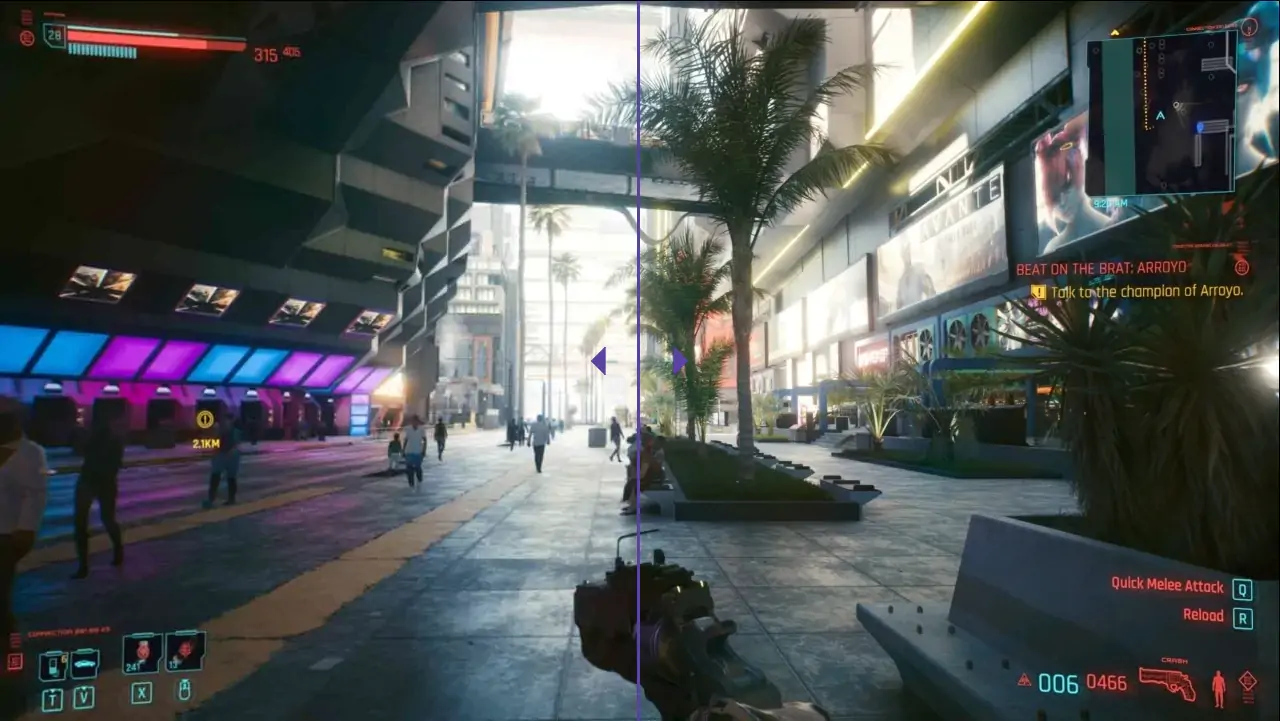
FPS Results with Ray Tracing Enabled vs Disabled
During our various test phases, the Intel Arc 140T showed variable performance depending on Ray Tracing activation. Without Ray Tracing, the iGPU offers a comfortable average of 60 to 75 FPS at 1080p on tested titles, ensuring a fluid experience for most casual gamers. However, once Ray Tracing is activated, performance drops noticeably, with averages around 30 to 40 FPS depending on the game.
For example, in Cyberpunk 2077, activating Ray Tracing reduces FPS by approximately 50%. In Control, the drop is slightly less pronounced but still notable. For Fortnite, a less demanding game, the impact is less severe, with a more moderate decrease.
These results clearly illustrate the constraints linked to this technology on an iGPU like the Arc 140T, highlighting the need to adjust settings to preserve playability.
Using XeSS to Improve Performance
As we mentioned, the Intel Arc 140T features XeSS technology, an intelligent upscaling system that improves performance without compromising visual quality. By activating XeSS technology, games are rendered at a lower resolution, then reconstructed in full HD thanks to the algorithm. This process considerably reduces the load on the CPU.
During our tests, using XeSS increased FPS by 30 to 50% depending on the titles, thus making Ray Tracing much smoother on this platform. The visual difference remains minimal, with a sharp image and little perceptible loss of detail. XeSS therefore proves to be a valuable ally for making the most of the Arc 140T, offering an effective compromise between graphics quality and fluidity.
Visual Analysis: Graphics Quality, Fluidity, Necessary Compromises
Visual analysis of games tested on the Intel Arc 140T revealed an interesting balance between graphics quality and fluidity, especially when Ray Tracing is activated. Without optimisation, certain light effects and reflections appear slightly less detailed, particularly compared to high-end dedicated cards, but these effects remain largely correct for an iGPU. Regarding fluidity, it’s generally satisfactory at 1080p, provided certain graphics settings are adjusted.
XeSS activation plays a key role in maintaining a good compromise. This technology notably improves fluidity without significantly degrading image quality. However, to guarantee a pleasant experience, it’s sometimes necessary to reduce certain parameters, such as shadows or textures, especially in heavily loaded scenes. These adjustments are essential if you want to fully enjoy Ray Tracing on the Arc 140T whilst maintaining good playability.
In summary, this iGPU offers a convincing visual experience in its category, with reasonable compromises.
General Performance
In this section, we’ll present the general performance of the Intel Arc 140T without Ray Tracing, based on benchmarks performed on popular games. We’ll also compare these results with those of other competing GPUs in the same price range to better position this solution in the market.
Benchmarks on Popular Games Without Ray Tracing
Without activating Ray Tracing, the Intel Arc 140T shows much more balanced performance suitable for 1080p gaming. On popular titles like Apex Legends, Forza Horizon 5, or CS:GO, the results are rather encouraging, with averages between 70 to 90 FPS, depending on the level of detail chosen.
In high configuration, in a game like Fortnite, the iGPU manages to maintain an average of around 80 FPS, offering a fluid experience even without upscaling technologies.
On less demanding games like Rocket League or Valorant, performance often exceeds 100 FPS, confirming the Intel Arc 140T’s role as a viable solution for casual gamers and competitive at entry level.
Overall, the Intel Arc 140T performs better without Ray Tracing. Depending on the games, this iGPU is perfectly suitable for Full HD gaming with medium to high graphics settings.
Comparison with Other GPUs in the Same Price Range
In terms of overall performance without Ray Tracing, the Intel Arc 140T positions itself against the latest generation AMD iGPUs and entry-level dedicated GPUs. For clarity, we offer a comparative table of average performance observed at 1080p on popular games:
| GPU | Average Performance (FPS) | Type |
|---|---|---|
| Intel Arc 140T | 70-90 | iGPU |
| AMD Radeon 780M | 60-85 | iGPU |
| NVIDIA RTX 3050 (laptop) | 90-110 | Dedicated GPU |
To summarise, the Arc 140T sits slightly above the Radeon 780M, thanks to its optimised Xe architecture and support for technologies like XeSS. Against the RTX 3050 Laptop, its performance is lower, mainly due to the absence of dedicated memory. However, for an iGPU, its results remain solid and interesting for light or intermediate gaming use.
Temperature, Noise, and Power Consumption
In this section, we examine the thermal and energy behaviour of the Intel Arc 140T integrated in the Ultra 9 285H CPU. Temperatures, fan noise, and electrical consumption were observed during intensive gaming sessions to evaluate the thermal management and energy efficiency of this graphics solution.
Temperature Observations During Stress Tests
During our tests, we planned prolonged stress sessions. The Intel Arc 140T displayed controlled temperatures, despite its direct integration with the processor. At maximum load, the iGPU reached peaks around 78 to 80°C without causing thermal throttling. However, thermal management largely depends on the cooling system of the hardware used.
In our configuration, after several minutes of continuous load, temperatures stabilised around 75°C. These results indicate good thermal control, allowing consistent performance to be maintained even during prolonged sessions. The iGPU thus remains suitable for gaming use without excessive overheating.
Fan Noise Level
Fan noise can be disturbing for some gamers. We therefore wanted to know how the Intel Arc 140T behaved during sessions. The noise level generated by the fans during our tests remained relatively discrete, even under full load.
During long gaming sessions, the noise reached approximately 38 to 40 dB, equivalent to an audible but not disturbing breeze in a normal environment. In office or multimedia use, the fans remain practically inaudible. The integrated design of the Arc 140T contributes to limiting the need for active cooling, thus ensuring a pleasant experience without excessive noise nuisance, even during the most demanding phases.
Power Consumption Under Load
At maximum load, the Intel Arc 140T displays moderate electrical consumption. During our 1080p gaming tests, the iGPU’s total consumption stabilised between 30 and 40 W. We noted very occasional peaks at 45 W, particularly in the most demanding scenes.
This low consumption allows laptops equipped with this iGPU to benefit from good battery life in mixed use whilst maintaining correct graphics performance without excessively draining the battery.
Value for Money and Conclusion
In this final section, we’ll examine the Intel Arc 140T’s value for money and identify its main advantages for budget-limited gamers. We’ll also offer recommendations according to different user profiles, before concluding with a concrete example of integration: the GEEKOM IT15 Mini PC, equipped with this iGPU.
Strong Points of the Arc 140T for Budget-Conscious Gamers
The Intel Arc 140T stands out as an interesting graphics solution for budget-conscious gamers. Its main strengths lie particularly in its direct integration with recent processors, eliminating the need for a dedicated GPU. Its compatibility with Ray Tracing and XeSS is another of its strengths.
It thus offers a correct 1080p gaming experience without major compromise on graphics quality. Its energy efficiency and balanced performance make it a relevant choice for occasional or intermediate gaming.
Read more about Best Gaming PCs Under 500: Affordable Power for Budget Gamers
Recommendations According to User Profiles
For casual gamers, the Arc 140T offers a fluid experience at 1080p on the majority of titles, especially without Ray Tracing. Competitive gamers can target less demanding e-sport games like Valorant or Fortnite with stable frame rates.
For content creators, the Arc 140T remains limited but offers interesting AV1 support for video encoding. This integrated iGPU will therefore particularly suit users looking for a versatile and economical solution, without high expectations for editing or 3D rendering.
Mini PC with Intel Arc A140T: GEEKOM IT15 Mini PC
The GEEKOM IT15 Mini PC perfectly embodies the Intel Arc 140T’s appeal in a compact format. Thanks to this integrated iGPU, this mini PC allows playing numerous games at 1080p whilst benefiting from low power consumption and reduced footprint.

- Intel® Core™ U9-285H / U5-225H
- Intel® Arc™ GPU: 140T (U9-285H) / 130T (U5-225H), XeSS and ray tracing support
- Dual-channel DDR5 5600MT/s SODIMM, up to 64GB
- M.2 2280 NVMe PCIe® Gen 4 ×4 SSD, up to 2TB
- Wi-Fi 7 and Bluetooth® 5.4
- Pre-installed Windows 11 Pro
It’s therefore ideal for students or casual gamers. It’s an accessible and versatile solution, combining office work, multimedia, and light gaming sessions.
Final Verdict: Ray Tracing Under £950, Is It Worth It?
Under £950, depending on the computer model, Ray Tracing with the Intel Arc 140T is an interesting option, particularly for budget-limited gamers. This integrated GPU offers correct performance. Not forgetting that XeSS support allows a fluid experience at 1080p. However, graphics compromises remain necessary for optimal gameplay.




